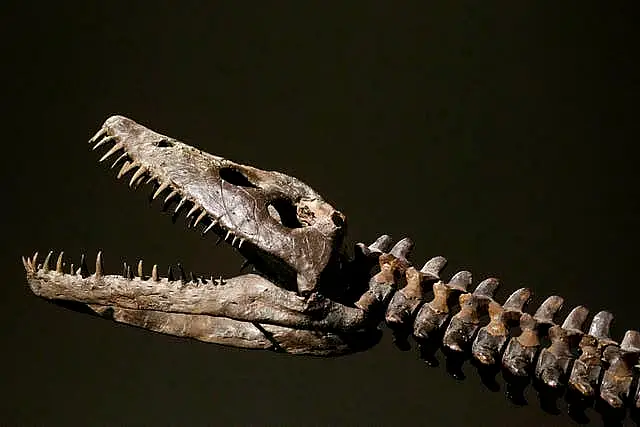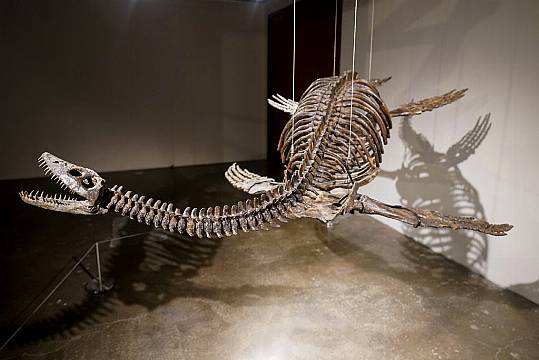The fossilised skeletons of an aerial predator with a six-metre (20-foot) wingspan and an aquatic reptile with a snake-like neck will be auctioned in New York this month, Sotheby’s has announced.
The two creatures, both believed to be tens of millions of years old, will be sold on July 26.
It will be the latest sale of prehistoric fossils from the auction house that launched a new era of fossil auctions by selling a Tyrannosaurus rex named Sue in 1997.
Cassandra Hatton, Sotheby’s head of science and popular culture, said, “More than 25 years since the ground-breaking sale of Sue the T. rex at Sotheby’s, we are very excited to now turn our attention to its predatory peers of the sky and the sea.”
The mounted skeletons that will be auctioned this month are a pteranodon, a huge bird-like animal that lived about 85 million years ago, and a plesiosaur, a 3.3 metre-long (11-foot) marine reptile of the type that is thought to have inspired the legend of the Loch Ness monster.
The pteranodon specimen, nicknamed Horus after the falcon-headed Egyptian god, was discovered in 2002 in Kansas in what was once an inland sea that divided the continent of North America during the cretaceous period, Sotheby’s said.

One of the largest winged creatures that ever lived, the pteranodon flew over water and used its long beak to fish for prey.
Almost all of the specimen’s original fossil bones have been preserved, Sotheby’s said.
Ms Hatton said: “To get something of this size with the level of preservation is incredibly rare.
“Generally, if you go to a museum and you find a specimen that’s super well preserved, it’s going to be something on the smaller side.”
Sotheby’s is estimating that the pteranodon will sell for four to six million US dollars (£3-£4.6 million).
The 11-foot-long plesiosaur was discovered in the 1990s in Gloucestershire, England and is believed to have lived about 190 million years ago.
According to Sotheby’s, many have drawn comparisons between plesiosaurs and the Loch Ness monster of Scottish folklore, as the plesiosaur’s long neck, small head and flippers mirror recorded descriptions of the fabled monster.
Sotheby’s is calling its specimen Nessie. The estimated auction price is 600,000 to 800,000 US dollars (£464,000-£618,000).
Sotheby’s has not identified the seller of either fossil.







